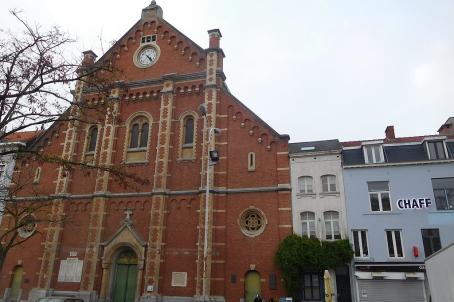Church of St. Gilles
The Church of St. Gilles was built in an eclectic style from 1868 to 1878. The first church was built in Saint-Gilles, then called Obbrussel, as early as the 13th century. Destroyed in 1578 by the inhabitants to prevent it from being used by the Spanish troops who were besieging Brussels, a new church was consecrated in 1600. Remodelled several times, the church was eventually destroyed in order to build a larger one in 1868, as the suburb of Saint-Gilles was experiencing a strong demographic growth. The plans for this new building were entrusted to town planner Victor Besme.






